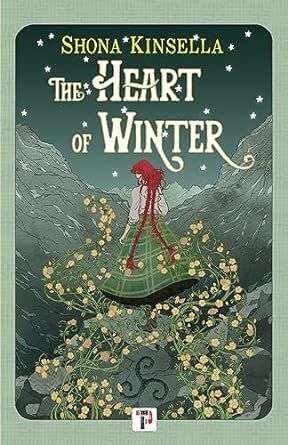We’ve implemented some new protocols around sending us messages via this website. Please email website “at” britishfantasysociety “dot” org for any issues.

For all things fantasy, horror, and speculative fiction
-
Announcement:

The Heart of Winter
The Heart of Winter by Shona Kinsella
Flame Tree Press, PB, £12.95
Reviewed by Sarah Deeming

When the weather fails and affects her village’s crops, Bridget is promised in marriage to Aengus, Lord of Summer, to change the village’s fortunes. But Bridget doesn’t consent to this, so she flees to the highlands, hoping the Cailleach, the Queen of Winter, will help her carve out an independent future. But the Cailleach isn’t interested in human affairs, and every day Bridget runs from the marriage, the consequences for her village grow. Is there a way for her to get what she wants without jeopardising her village, or must she give up on her dreams for the good of everyone else?
Set in a farming community, The Heart of Winter examines the importance of consent and consequences. Throughout the story, we are shown different scenarios where consent should have been sought before decisions were made on behalf of others. We are also shown the broader impact of these choices. No decision is made in isolation. Bad weather during the start of summer means Bridget’s community could starve during winter, so three elders, without discussing it with the rest of the community, make a deal with the Lord of Summer and agree to his bride price again without checking if Bridget is OK with it. I enjoyed that Bridget would have been happy to consent to the marriage for her community had she been involved in the decision. She even says this herself. Her love for her parents and best friend and her strong sense of solidarity with her village means Bridget is willing to sacrifice for them, but not if she is treated as property. She must be respected as a person, and rightly so.
This story also revolves around sacrifice and caring. When Bridget meets the Cailleach, the Queen of Winter isn’t interested, but Bridget’s character shines through as her actions and words align. She is as honest and thoughtful as she appears. Through Bridget’s quiet companionship, the Cailleach learns to love life again. Mutual respect is at the centre of their relationship, unlike Bridget’s relationship with the village elders, where she is seen as only a young girl and, therefore, has no agency. A valuable lesson in the real world.
As always, Kinsella’s love of nature shines through in her location descriptions and her attention to detail in creating her scenes. She uses the nuances of farming village life to build a picture of Bridget’s world rather than just tell us about her life. She uses little cues in nature to create a realistic journey for Bridget from summer to winter, and Bridget’s personality shines through the page in the little things she does and notices. Once I’d finished, I was amazed at how cleverly written The Heart of Winter is, using the environment and actions to demonstrate the characters’ personalities, not just Bridget’s but even the gods themselves, rather than bore us with a list of features and characteristics. As someone who prefers a character-driven narrative, The Heart of Winter gives me exactly what I want in a story.
The Heart of Winter is a gentle modern-day myth about consent with love and tenderness at the story’s centre, suitable for all ages. High recommended.
Explore the blog:
Blog categories:
Latest Posts:
Tags:
#featured (56) #science fiction (25) Book Review (264) events (44) Fantasy (231) Graphic Novel (13) horror (136) Members (62) Orbit Books (48) profile (43) Romance (17) Science Fiction (50) short stories (28) Titan Books (52) TV Review (15)
All reviews
Latest Reviews:
- THE HOUSE ON THE BORDERLAND by William Hope Hodgson
- Monstrum by Lottie Mills
- Mood Swings by Dave Jeffery
- Yoke of Stars by R.B. Lemberg
- Hera by Jennifer Saint
- The Black Bird Oracle by Deborah Harkness
- RETURN OF THE DWARVES By Markus Heitz
- Delicious in Dungeon
- Toxxic by Jane Hennigan
- THIS ISLAND EARTH: 8 FEATURES FROM THE DRIVE-IN By Dale Bailey
Review tags:
#featured (2) Action (4) Adventure (4) Book Review (28) Fantasy (18) Featured (2) Feminist (2) Gothic Horror (3) Horror (14) Magic (3) Orbit Books (3) Romance (6) Science Fiction (5) Swords and Sorcery (2) Titan Books (7)